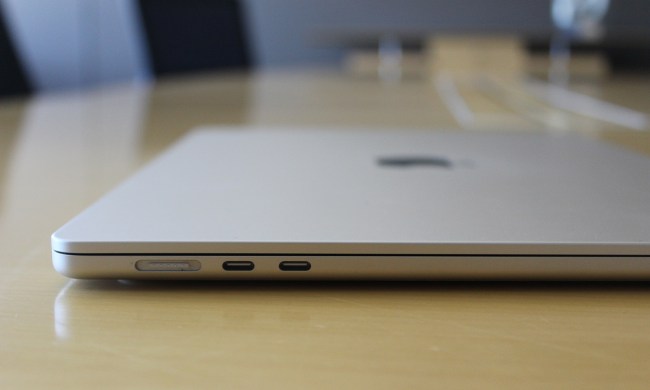While most browsers offer zoom functions, it’s often easier to use the native zoom function onyour operating system that works with everything, no matter what you are doing. Mac machines have this ability, and we’ll show you how to zoom in on a Mac, customize it, and control it!
Keyboard zoom shortcuts

If zoom is already enabled on your computer and you’re ready to go, these are the quick keyboard shortcuts to learn (if keyboard shortcuts and zoom aren’t turned on, move down to the zoom panel section for more information). With a little bit of practice, you can snap zooms and un-zooms instantly as you work on your Mac.
Option-Command-8: This turns the zoom function on or off. Obviously you want it on, but it’s a handy way to check if you’re unsure.
Option-Command-Plus Sign (+): The equal sign version is the way to zoom in on your Mac. Use this input to embiggen.
Option-Command-Minus (-): Zoom out with this function when you are done, or when you want to navigate faster.
Follow Keyboard Focus: While this option doesn’t have a pre-designated keyboard command, you can assign one if you want. If you’ve never used keyboard focus following before, it basically shows which element is currently being highlighted by the keyboard (learn more about how this helps accessibility here).
Note: It’s important to find an updated version of keyboard zoom commands, because they have been known to occasionally change. This list works with Mac Catalina, currently the most recent OS, and we’ll work to keep it updated if another change occurs.
Open up the zoom panel for customization

Step 1: Open up System Preferences from your Dock or by clicking the Apple menu, then System Preferences. From there, choose Accessibility.
Step 2: In the Accessibility window, you will see a list of settings panels on the left side that you can choose from. Look for the Zoom panel (it should be early on) and select it.
Step 3: The window will now show several zoom features that you can enable or disable by checking them. Enable Use keyboard shortcuts to zoom and any other options you feel would be helpful.
Step 4: Pay close attention to the Zoom style dropdown menu. Here you can choose either Full screen, Split screen or Picture-in-picture zooming. For large screens in particular, picture-in-picture may have more advantages for navigation, but you can switch between the three to see what you like best. The Advanced and Options buttons to the right will give you some more options to click and try out. These are all good things to adjust as needed.
Zooming in on the Touch Bar

Newer Macs come with the OLED Touch Bar with illuminated icons that change based on what software you’re using. It’s a hit or miss addition, but it does come in handy for accessibility options. Here’s how to zoom in on the Touch Bar.
Step 1: Visit the Zoom settings panels as described in the above section. If your Mac machine has a Touch Bar, you should see a new check box for Enable Touch Bar Zoom. Make sure it is selected.
Step 2: Touch and drag a finger on your Touch Bar until the zoomed-in version of the Touch Bar appears on your screen for easier control. If the icons still aren’t big enough, press the Command key and “pinch” and expand the Touch Bar on the screen with your thumb and finger. This should make the Touch Bar larger.
Step 3: While swiping across the Touch Bar with one finger, quickly tap with a second finger. This will synthesize a tap where your first finger is. If you hold your second finger down and drag both digits, you can synthesise a tap and drag motion based on where your first finger is placed.
Step 4: If you tap and hold one finger on the Touch Bar, you can enable direct-touch mode, which lets you interact directly with the Touch Bar element underneath your finger.



